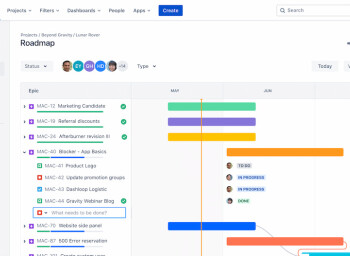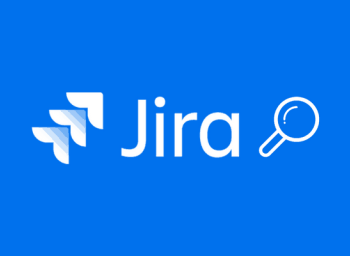The Most Efficient Way to Track Employee Performance: Best Practices and Tips for Your Business
Employee performance monitoring is vital to help your company achieve strategic goals and assess team growth. Research conducted by The Wall Street Journal claims that 48,1% of organizations around the world track staff performance one way or another. This proves that the approach is used widely around companies of all levels.
This article explains how to track employee performance effectively without crossing the red line, highlights the potential benefits, and shares the best methods.
Why Tracking Employee Performance Matters?
Understanding your team’s efficiency is necessary to determine realistic goals and adapt your company’s strategy. You can see who is doing great and who isn’t, getting better insights into both strong and weak points within the organization.
Additionally, tracking the performance of employees lets you:
- Discover individual skills to assign the most suitable roles;
- Help employees grow and develop;
- Create a fair performance management process;
- Enhance productivity and commitment.
All these benefits are only available when you implement employee performance tracking systems correctly. This isn’t just about choosing the right tools and software. It’s also about following the best practices that simultaneously develop your company’s culture. That’s when progress can be seen.
What Type of Companies Can Benefit From Tracking Employee Work?
A large variety of companies use monitoring tools to get accurate reports that show the completed work and required efforts. This is mostly relevant for positions with employees working from home, although many office-bound teams do this as well.
Among the most frequent industries, we may include:
- IT;
- Staffing agencies;
- Financial companies;
- Consulting services;
- Law firms, and others.
Companies from these industries use employee performance tracking tools the most due to the peculiarities of their work processes. That’s why it is possible to state that these organizations would benefit the most if they apply the tools appropriately.
Who Should Track Employee Performance in Your Company?
Usually, a performance manager is responsible for tracking employee performance in large organizations. This specialist provides regular constructive feedback to ensure the team improves performance and meets company goals.
In smaller companies, this becomes the responsibility of a project manager or HR. These positions are already close to employee management, so they understand the way people work. Their experience is very beneficial in the performance monitoring of employees.
Top-level positions are best at operating the data they receive from performance management teams to make strategic decisions. However, monitoring isn't the best option for them because it requires a lot of time, so the task is better off delegated to someone with relevant skills.
Avoid Micromanagement
Micromanagement means taking control of every step an employee does while working.
This is a tricky path. While you may think that you've got everything under control, the actual results are:
- Increased stress;
- Reduced productivity;
- Reduced creativity;
- Reduced engagement, and more.
Your workforce must have some autonomy to work effectively. Micromanagement limits the team and blocks all possibilities. That's why you must ensure that you don't cross the line.
Methods for Tracking Employee Performance
Now let's check out how to track the performance of an employee in your team. There are many options, but the following are the most effective.
Reviewing Work-in-Progress
Some companies evaluate performance only after their teams complete projects. While this approach may exist, it may not always be effective.
The best option is to divide your project into several milestones that include a performance review. This will show your employees' current challenges, making space for immediate changes.
Solving possible issues during the early stages of your projects can save a lot of resources that would otherwise be wasted. Also, this would help you comply with all deadlines and prevent employees from burning out, as constant problems are a direct way to fatigue.
Using Self-Monitoring Tools
Self-monitoring tools usually involve time trackers that help employees calculate their work efficiency. RMClient provides an easy-to-use solution that may be integrated into Jira or Redmine for self-monitoring.
There is various research on the notion of general self-monitoring in terms of psychology, demonstrating that people who self-monitor more frequently appear to get better soft skills and performance. Therefore, the application of additional software may work as an effective motivator to boost work effectiveness.
Applying Shareable Calendars
Using a shared calendar helps understand the current workload of each individual employee. Tools like Google Calendar let colleagues easily share their busy hours.
Apart from understanding everyone's load, you can also use this software to plan meetings that are convenient for all parties. There's no need to distract everyone by pinging them in the chat and asking, "is this time OK?".
Conducting Regular Stand-Up Meetings
Many companies use daily and weekly stand-up meetings where each team member explains their work progress, covers the encountered challenges, and describes their plans for the day. This is a good way to understand general performance and stay updated on the project's status.
Simultaneously, regular stand-up meetings promote your employee's responsibility and self-organization as they learn to plan their activities better and share thoughts with the whole team. It is vital for everyone to be open about all encountered challenges because transparency is the only way to keep work effective.
Why Tracking Employee Performance Using Excel is Not a Good Idea?
If you're wondering how to document employee performance effectively, you should forget about Excel. This is an outdated approach that eats up too much time as everything is filled in manually.
This also creates the following challenges:
- Lack of confidentiality because other employees may have access to the data;
- Human errors will likely happen as most data is entered and saved manually;
- Difficult to compare previous year results as there is no systematization;
- Increased workload for medium and large-sized companies.
Using performance management software like RMClient minimizes the required resources to monitor your team. Most processes can be automated, storing the data and letting you compare previous results. It makes the PM's and HR's work far more efficient.
6 Best Ways to Track Employee Performance in Your Company
Now we'll cover how to keep track of employee performance and make the process effective. The grail of truth awaits!
1.Setting Realistic Goals
Can you win a game of chess without knowing the rules? That's very unlikely. So is doing one's job without knowing the right expectations.
Start by discussing the work process with your team. Each specialist can provide an approximate realistic number of what they could complete, so consider their thoughts. Do not set goals without them because it is unlikely that you understand the details of each position.
Following this approach will help you set adequate requirements that are challenging but achievable. That's how you'll also keep track of your team's growth and development.
2.Assessing Employee Development
While working on a project, you will see your team applying various skills in practice. This is an opportunity to determine up-to-date strong and weak points. Knowing these will help you understand the areas that require further growth.
You can assess the development of your employees in several methods:
- Correlating set goals and actual results;
- Conducting interviews where you discuss their personal challenges;
- Calculating the return on investment.
There are hundreds of ways to estimate employee growth, so your task is to understand which of them is the most effective for your case. Simultaneously, you should keep your team updated to help them understand the required direction for growth.
3.Focusing on Continuous Learning
Remember the saying "you live and learn"? That applies to work as well. Learning new skills is essential to keep up with the constant changes happening in the world. Your responsibility is to make the team eager to learn continuously.
Many companies fund and support the following options for their teams:
- Online and offline courses;
- Industry-related conferences;
- Mentoring and face-to-face coaching;
- Internal knowledge exchanges, and others.
You can promote continuous learning by gamifying the process and choosing top-level materials. This will keep the process interesting and challenging for your employees, ensuring they feel they are spending time wisely. As for you, you'll get a clear understanding of the areas where your team constantly grows.
4.Creating Strong Feedback
You're halfway through understanding how to monitor employee performance without actually crossing the red line. The next step is providing robust feedback that evaluates your employees' work and helps them grow.
Your feedback must always be:
- Constructive;
- On-time;
- Descriptive;
- Honest.
It must be clear that feedback is required to improve the team's productivity levels and help you evaluate its effectiveness. The employee gets a direction for growth while you get a clear skill assessment.
5.Following SMART Goals
If you want to take your goal-setting process to the next level, consider following the "SMART" model. This will help you strategize even better while keeping all important notions in mind.
A "SMART" goal is:
- Specific — one that's well-defined, has clear numbers, and sets strict terms;
- Measurable — one that includes different milestones and has certain metrics to be met;
- Achievable — one that is possible to achieve considering the available time and resources;
- Relevant — one that covers your company's general strategy;
- Timely — one that has strict deadlines per each stage because there is no quality without timing.
Following this approach will help you cover all blank spaces, ensuring the team knows what is expected and what they should strive for.
6.Conducting Regular Surveys
Surveys are another type of performance tracker for your employees. They are needed to understand what your team thinks about its work and efficiency.
Surveys are a great tool for detecting:
- Satisfaction levels;
- Personal growth;
- Current challenges;
- Productivity levels, and more.
While the number of required surveys is situational and individual per company, it is recommended that you conduct at least one survey each quarter. This will provide you with up-to-date information that will depict current employee growth.
How Can RMClient Help?
RMClient was developed as the ultimate solution to track time in Jira Cloud, Jira Server, Redmine, Easy Redmine, and Planio. The solution lets you edit issues in several clicks, get notified about important changes, and seamlessly navigate within the app.
With RMClient, your planning and evaluation will become more accurate due to the monitoring of actual time spent. You'll know the real workload on your team, optimizing expenses and increasing profitability.
FAQ
You must ensure your team can easily measure the KPI you set. Keeping it transparent will promote working for results, helping your company grow each day.
Similar articles
Didn’t find what you were looking for?
E-mail us to discuss and implement your project, application or service. We will answer all of your questions and will offer the best solutions.

 Artyom Makeyev
Artyom Makeyev
.png)





